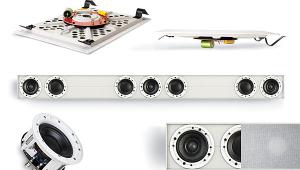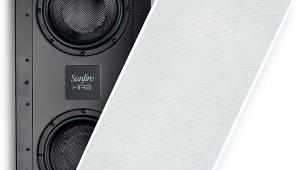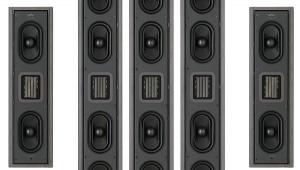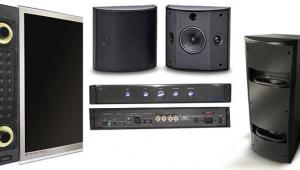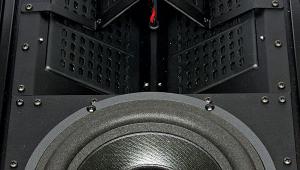Outsourcing web development https://mlsdev.com/blog/how-to-outsource-web-development can be a strategic decision for many businesses, providing access to a wide talent pool while reducing costs. Here's a guide on how to outsource web development effectively: Define Your Objectives: Start by clearly defining your project objectives. What are your goals, and what do you want to achieve with the web development project? Having a clear vision is essential. Identify Your Budget: Determine the budget you are willing to allocate to the project. Be transparent about your financial constraints with potential outsourcing partners. Choose the Right Outsourcing Destination: Research and select the outsourcing destination that aligns with your objectives. Popular destinations for web development outsourcing include India, Ukraine, Eastern Europe, and Southeast Asia.
Origin Acoustics/Bang & Olufsen BOC106 In-Ceiling Speaker Review Page 2


Greekiness
Euclid, the Greek mathematician, never recommended using inceiling speakers for anything other than playing soul-destroying background music or paging systems. (“Will the person who left a Valyrian steel sword at the TSA checkpoint, please return to claim it…”) For starters, he lived around 300 BC, and no company was manufacturing in-ceiling speakers in Greece at that time (or today, as far as I can tell). More importantly, Euclid knew that the geometry of placing speakers above your head in the ceiling isn’t the same as placing speakers in front of you. It’s not that the ceiling is an inherently bad location for loudspeakers. The problem is that humans are really good at determining the direction sounds are coming from, and it’s difficult (but not impossible) to trick a listener’s ears into thinking a sound is barreling straight at him or her from the front rather than angling down from the ceiling.
When installed in a ceiling (as it’s primarily designed to be), the BOC106 is subject to the same geometric/acoustic travails as any other in-ceiling speaker. The pivoting tweeter and midrange in the Celestial BOC106 allows an installer to “aim” the frequencies we’re most directionally sensitive to into the listening area in order to help mitigate the less-than-ideal speaker placement. Mitigate, though, doesn’t mean eliminate. It means “make less severe”; and how much less severe it can make the problem is, perhaps, the most important aspect of any serious in-ceiling speaker.
How well does the BOC106 do at not sounding like it’s installed in the ceiling? The answer depended upon what I was listening to…
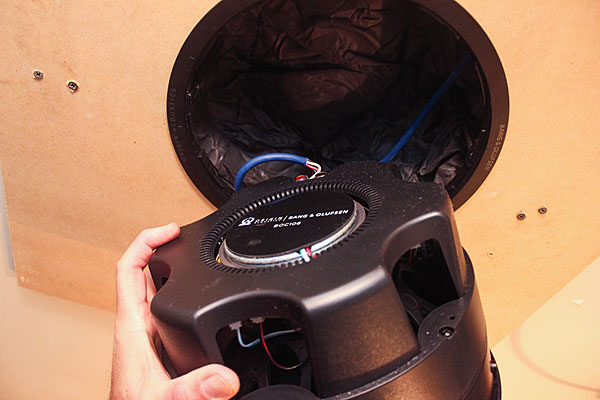


Colliding With the Beast
I decided to listen to the five Celestial BOC106 speakers au naturel (without a sub) as well as with the bottom-end duties covered by the JL Audio IWS-SYS-1 in-wall subwoofer I reviewed earlier this year (Sound & Vision, April 2017 and soundandvision.com). For the former configuration, I ran the BOC106 speakers full range. For the latter 5.1-channel setup, the BOC106s were crossed over at 80 Hz, as was the sub. Considering the JL Audio IWS-SYS-1 in-wall sub reaches 20 Hz with poise and aplomb, it’s not surprising that the BOC106 speakers on their own didn’t have the kind of impact they did when paired with the sub. I’ve already reviewed the JL Audio sub, so I won’t go into its performance here other than to say that the IWS-SYS-1 was a perfect match for the BOC106 speakers. The transition from mid to low bass was so smooth that at times—other than when the source material made it overwhelmingly obvious—I had to double-check the settings to see whether the sub was on or off.
With or without the sub, airy and unfettered are two of the qualities I noticed immediately when I listened to the BOC106—especially, but not exclusively, when it came to dialogue. In the movie Collide, for example, when the doctor is telling Juliette (Felicity Jones) that she’s going to need dialysis and, eventually a kidney transplant, the dialogue is extremely intelligible and clear with very little sense that it was coming from anywhere other than the screen. Later, when Casey (Nicholas Hoult) is being held in a warehouse and about to be tortured, all five speakers contributed to the subtle sense of spaciousness when Hagen Kahl (Anthony Hopkins) suddenly yells at Casey. The music that played in Casey’s imaginary interludes was sweet and beautiful—again, without seeming to come from the ceiling. Perhaps because all the speakers were in the ceiling, surround effects moving from front to rear were exceptionally smooth and seamless, such as when during one of the many car chases when a car flew across the room. Interestingly, later on when Casey shoots at Wolfgang, the sound of the bullet casing hitting the ground did seem to come from the floor. Likewise, at the racetrack, when a bullet misses its target (Casey, again) and hits the lower part of a wall, the impact sounded down low in the front, too.
Unlike in Collide, there’s not a lot of obvious surround effects in Split, which—as you might expect with a movie about someone with 23 different personalities—relies heavily on dialogue. Throughout the movie, the BOC106 speakers showed off their clarity and neutrality. I don’t remember if Kevin (James McAvoy) expressed all 23 of his personalities, but the wonderful intelligibility of the speakers clearly brought out all the small but important changes in nuance and tone in the personalities that did stand in “the light.” Other small sounds were crystal clear, such as when Dennis (one of Kevin’s identities) taps a mayonnaise jar when making a sandwich for his therapist and, later, the piano music that plays under the kidnapped girl’s conversation with Hedwig/Kevin. Amazingly, I can’t remember any point in time when these soundtracks called attention to the fact that the speakers were in the ceiling rather than in front of me.
Watching Disney’s recent live-action feature Beauty and the Beast confirmed for me that the BOC106 speakers are absolutely wonderful for home theater use. Although I wasn’t all that interested in watching the movie at first, it didn’t take long for the unrestrained and open characteristics of the BOC106 system to draw me in. The music and vocals were natural and engaging, and the surround effects were spot on where they should have been located. The horse flinging mud across the room, for instance, hitting the young ladies as they swoon over Gaston, was extremely well represented. Although I rarely noticed the lack of a subwoofer during the previously mentioned movies, it was a totally different story with Beauty and the Beast. In my room, the BOC106 system dropped off dramatically below what sounded like about 30 Hz—and there’s a lot of Beast that lives and breathes in that below-30-Hz range. On the other hand, running full range, the speakers never showed any signs of stress or breakup during those heavy-bass scenes.
Skewed Up but Not Screwed Up
I listened to the front left and right speakers running full range for two-channel music. Everything I’d noticed about the five-channel configuration’s performance was also apparent with the two-channel setup—with one exception. For example, the just-released Les Liaisons Dangereuses 1960 (a two-CD set made from the original studio tapes of the music the Thelonious Monk Quintet recorded in 1959 for the French movie of the same name) contains a version of “Light Blue” that’s beautiful for its fidelity. The snap of the drums was succinct and light, and I could clearly hear the rattle of the drum membranes as they were hit. Monk’s piano was mellow, with a nice sense of decay on the low notes and a pointed plink belonging to the highest keys. The saxophone was smooth and smoky, exactly the way I’ve always imagined a saxophone in a packed jazz club in the 1950s would have sounded. In short, truthfulness and natural timbre are not a problem for the BOC106.
The imaging was mostly impressive, too, to the point that I could hear the placement of individual drums in the set. The physical arrangement of the instruments—the saxophone on the left, piano in the middle, and drums on the right—was also perfectly rendered. Everything sounded just the way it should have, except for the plane of the soundstage. Sound didn’t seem to come from directly in front of me as it did when I watched movies. Instead, with no visual cues coming from a low-down screen, the soundstage now seemed raised up several feet—or, more accurately, the room itself seemed acoustically tilted. The piano remained in the center but sounded like it was a foot or two above ear level. The saxophone player, however, sounded more like he was 8 or 9 feet above the stage. The drummer was equally elevated.
If you like music featuring marimba and clarinet (and who doesn’t, nowadays?), the newly released CD from husband-wife duo Richard and Mika Stoltzman (on clarinet and marimba, respectively), Duo Cantando, will be just the thing for you. “Concerto #1, Part III” (composed by Chick Corea) is an orchestral piece that prominently features Mika on the marimba. The smooth and neutral characteristics of the BOC106 let the nuanced, ringing tones of the marimba—from the heavier and hollower-sounding low bars to the softer, shorter clinks of the higher ones—come through effortlessly. The BOC106s were spectacularly smooth and open with the violins and the rest of the string section, as well as displaying an equal neutrality with the clarinet and remaining woodwinds. Not surprisingly, perhaps, the lowest notes of the marimba on this track, along with the bottom end coming from the drums and percussion, were some of the few musical elements that did benefit slightly from the deep-bass output added by the JL Audio IWS-SYS-1.
Hardcore punk isn’t the most likely style of music for playback over in-ceiling speakers, but the dynamic, hard-hitting bass on one of The White Noise’s lighter, more melodic tracks, like “I Lost My Mind (In California)” (from AM/PM), gave a good indication of how coolly and smoothly the Celestial BOC106s could handle the transient assault. Since that disc’s screaming vocals left a little to be desired in terms of judging the speakers’ performance, I also gave a listen to Michael Kiwanuka’s Love & Hate disc, with a short detour through an old favorite, Come Away With Me, by Norah Jones. Kiwanuka’s “Cold Little Heart” contains a long instrumental intro with a soundstage that was astonishingly wide; and, interestingly enough, the outer edges of the soundstage appeared to loop back down following the tilt of the listening plane. Later, Kiwanuka’s soulful voice had a clear and solid heft. Higher and lighter, Jones’s voice came through naturally and without constriction.
Conclusion
Two years ago, when I reviewed the Origin Acoustics Director D108 in-ceiling speakers, I said that the D108 speakers were “the best overall performing in-ceiling speakers I [had] ever heard” and were “without reservation my top recommendation for in-ceiling speakers.” My opinion still stands on the D108s, but the BOC106 speakers rank as a very close second—primarily because they don’t have quite as much lowbass output as the D108 speakers do. You could get by without a dedicated subwoofer for movies using five or more of the D108s and not feel cheated, though the BOC106 speakers really ought to have a sub in order to do justice to many effect-laden movie soundtracks. On the other hand, the BOC106 brings a level of sophistication that ups the ante. To simplify, the Origin Acoustics D108 speakers are for fans of the spectacle, whereas the BOC106 speakers are for aficionados of the sublime. The refined look of the BOC106’s included Premium Grilles also adds a subtlety to the speaker’s in-ceiling visuals—while the stunning, slotted Advanced Grilles offer an even more refined look without the understatement.
Try as they might, the Origin Acoustics/Bang & Olufsen BOC106 in-ceiling speakers can’t totally overcome the elevated soundstage that is an inherent problem with ceiling-mounted speakers, especially for two-channel music. But, in fairness, these and other highperformance in-ceilings likely find primary use in stealth home theaters for movie watching, and only secondarily for critical music listening. For those who prefer to seek their sonic answers from above, the BOC106 a fabulous-sounding, sleek-looking in-ceiling solution.
- Log in or register to post comments


outsourcing web development may be a wise strategic move as it lowers expenses and gives them access to a large talent pool. Here's a how-to guide for successfully outsourcing web development : https://www.krishangtechnolab.com/how-to-outsource-web-development-service/

Plastic thank you bags are a type of disposable bag commonly used by businesses to package their products and express gratitude to customers. They are typically made from high-density polyethylene (HDPE), a type of plastic known for its durability and low cost.



